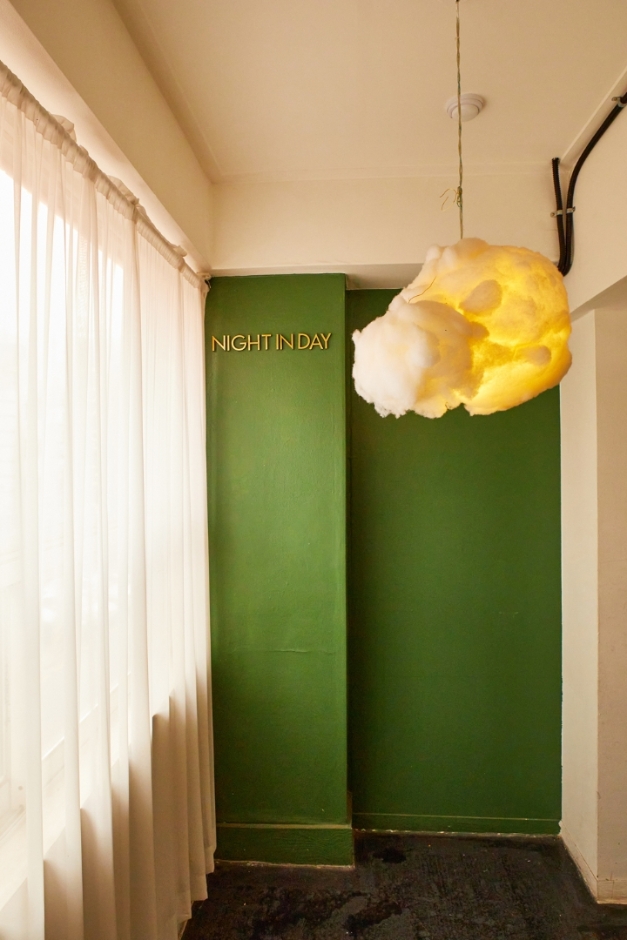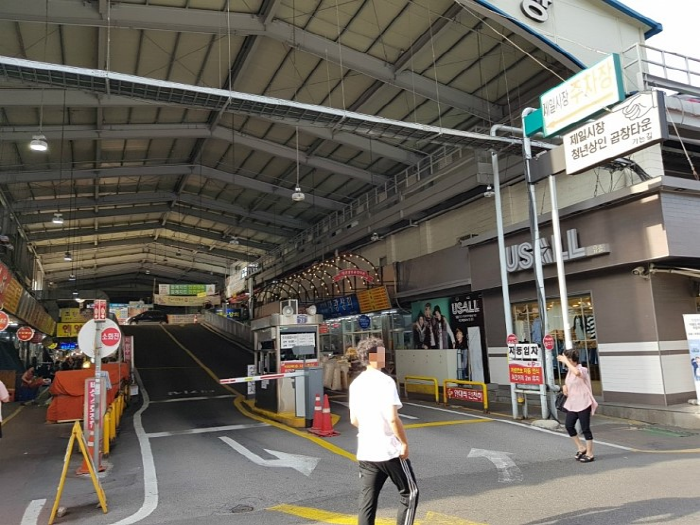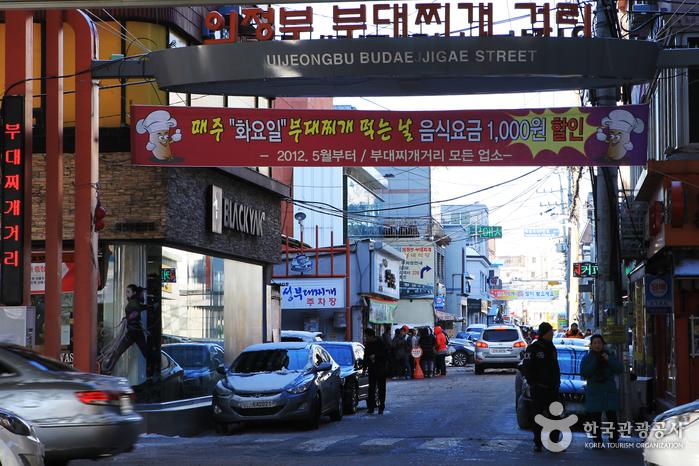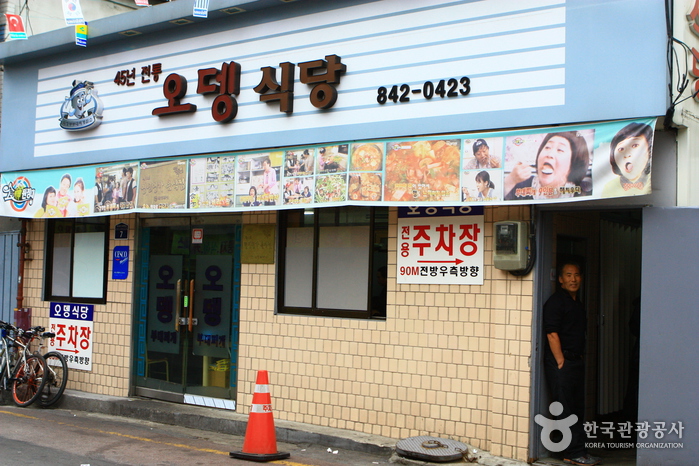Artbox - Uijeongbu Branch [Tax Refund Shop] (아트박스 의정부)
8.9Km 2024-04-22
5, Haengbok-ro, Uijeongbu-si, Gyeonggi-do
-
The North Face - Dobongsan Branch [Tax Refund Shop] (노스페이스 도봉산점)
8.9Km 2024-04-19
77, Dobongsan-gil, Dobong-gu, Seoul
-
Seoul Doseonsa Temple (도선사(서울))
8.9Km 2025-06-25
504 Samyang-ro 173-gil, Gangbuk-gu, Seoul
Doseonsa Temple was established 1,100 years ago during the latter part of the Silla Kingdom when the renowned Buddhist priest Doseonguksa was traveling through the mountains. After visiting the site, Doseonguksa made a prophecy that led to the construction of the temple. According to legend, he used only his walking stick to carve the large Bodhisattva that sits at the temple. Interestingly enough, the statue does not show any evidence of chisel marks, further adding to the mystery of how the statue was made.
During the 7th year of King Gwangmu of the Joseon dynasty, Doseonsa Temple was officially named the representative temple of Korea with the purpose of promoting Cheongdamdaejongsa's Korean Buddhism movement, aiming at a religious revival. Due to these special circumstances Deseonsa Temple gained a high reputation and much recognition, which have held strong to this day.
Inside the temple, visitors can view the remains and written works of Cheongdamdaejongsa in the Cheongdamdaejongsa Memorial Hall. Next to the road leading to Cheonbuljeon Hall is a pond where you can toss a coin and make a wish and just past Yongammun Gate is a hiking path connecting Baegundae Cliff and Insubong Peak. Inside the Ksitigarbha Hall are portraits of President Park Chung-hee, Yuk Yeong-su, and Hyundai Chairman Chung Ju-yung. In front of the hall is a tree that is said to have been planted by a Buddhist priest who brought it from India 200 years ago. Historical artifacts can be found throughout the temple.
NIGHT IN DAY / 나잇인데이
8.9Km 2023-11-06
17, Pyeonghwa-ro 562beon-gil, Uijeongbu-si, Gyeonggi-do
This cafe stays open well after midnight, so one can head there without worrying about closing hours. From the entrance, the interior impresses with artistic objects with antique and retro-style motifs. There are plenty of nice backgrounds to take pictures against, so this is a famous spot for social media photography as well. The ambience is like that of a comfortable hideaway, perfect for conversations in small groups, thanks to paintings and objects that adorn the corners and the walls. The most famous of them all is the clouds, which hang from the ceiling and create the ambience unique to this cafe. The signature menu here is coffee and smoothies. It also serves croffle and cake dishes as accompaniments.
Olive Young - Uijeongbu Jungang-ro Branch [Tax Refund Shop] (올리브영 의정부중앙로)
9.0Km 2024-04-17
12, Haengbok-ro, Uijeongbu-si, Gyeonggi-do
-
Uijeongbu Jeil Market (의정부 제일시장)
9.0Km 2023-10-26
43-2, Simin-ro 121beon-gil, Uijeongbu-si, Gyeonggi-do
This is the largest traditional market in Uijeongbu and one of the largest in northern Gyeonggi-do. It offers a large collection of goods for sale, so it is beloved by Uijeongbu locals and people from the surrounding areas. Because of its size, the market has multiple entrances that lead to the four zones of Ga, Na, Da, and Ra. Its large size and prominence also mean the market is organized and hygienic. The market is quite famous for its Fried Chicken Street, which serves whole chicken fried to order. A less famous but no less delicious secret is the “food department store” on the first underground floor. This is a massive collection of restaurants and food carts serving a great variety of meals. When one steps into the “department store,” one feels as if one is truly among the locals in their favorite hangout, with middle-aged diners gathering for a meal or some drinks with their friends. Note that for some dishes like seafood, there is no fixed price. The market price is used instead. But no matter what stall one visits, the stalls tend to be quite generous with their food, so if you are interested in some local gourmand experience, make sure to visit.
Uijeongbu Budaejjigae Street (의정부 부대찌개거리)
9.1Km 2023-10-27
7, Hoguk-ro 1309beon-gil, Uijeongbu-si, Gyeonggi-do
The word “budaejjigae” has two parts: “budae”, or military unit, and “jjigae,” a dish made by boiling ingredients and stock in a pot. It originates from the post-Korean War period, where processed meat from US Army bases was made into a jjigae with vegetables, glass noodles, ramyeon, and the like. While the exact origin of the dish is difficult to establish, a strong tradition of sausage jjigae was established in Uijeongbu, thanks to its proximity to US Army bases. These geographical characteristics created today’s Uijeongbu Budaejjigae Street. Starting with Odeng Sikdang, the origin of the street, restaurants specializing in sausage jjigae entered the area, creating a specialized street and a landmark of Uijeongbu.
Bukhansanseong Fortress (북한산성)
9.1Km 2020-03-26
375, Daeseomun-gil, Deogyang-gu, Goyang-si, Gyeonggi-do
+82-31-968-5325
First built in 132 during the Baekje era (18 BC-AD 660) under King Gaeru's reign, Bukhansanseong Fortress was the northernmost fortress that protected Baekje from Goguryeo's forces. In the year 475, the fortress fell in the hands of Gogyuryeo after a fierce battle. As a result, King Gaeru was killed and Baekje's princess fled to Ungjinseong Fortress. Despite the fortress' collapse and reconstructions, Bukhansanseong Fortress continued to play an important role in protecting the capital city throughout Korea's history of war.
Odeng Sikdang Uijeongbu Main Branch (오뎅식당)
9.1Km 2024-12-06
7, Hoguk-ro 1309beon-gil, Uijeongbu-si, Gyeonggi-do
+82-31-842-0423
The origins of Uijeongbu’s budaejjigae (Sausage Jjigae) tradition trace back to a humble food stall, now operated by the third generation. As budaejjigae grew in popularity, this modest stall evolved into a dedicated restaurant specializing in the iconic dish.
![Artbox - Uijeongbu Branch [Tax Refund Shop] (아트박스 의정부)](http://tong.visitkorea.or.kr/cms/resource/93/2881293_image2_1.jpg)
![The North Face - Dobongsan Branch [Tax Refund Shop] (노스페이스 도봉산점)](http://tong.visitkorea.or.kr/cms/resource/79/2891179_image2_1.jpg)


![Olive Young - Uijeongbu Jungang-ro Branch [Tax Refund Shop] (올리브영 의정부중앙로)](http://tong.visitkorea.or.kr/cms/resource/92/2881292_image2_1.jpg)



 English
English
 한국어
한국어 日本語
日本語 中文(简体)
中文(简体) Deutsch
Deutsch Français
Français Español
Español Русский
Русский